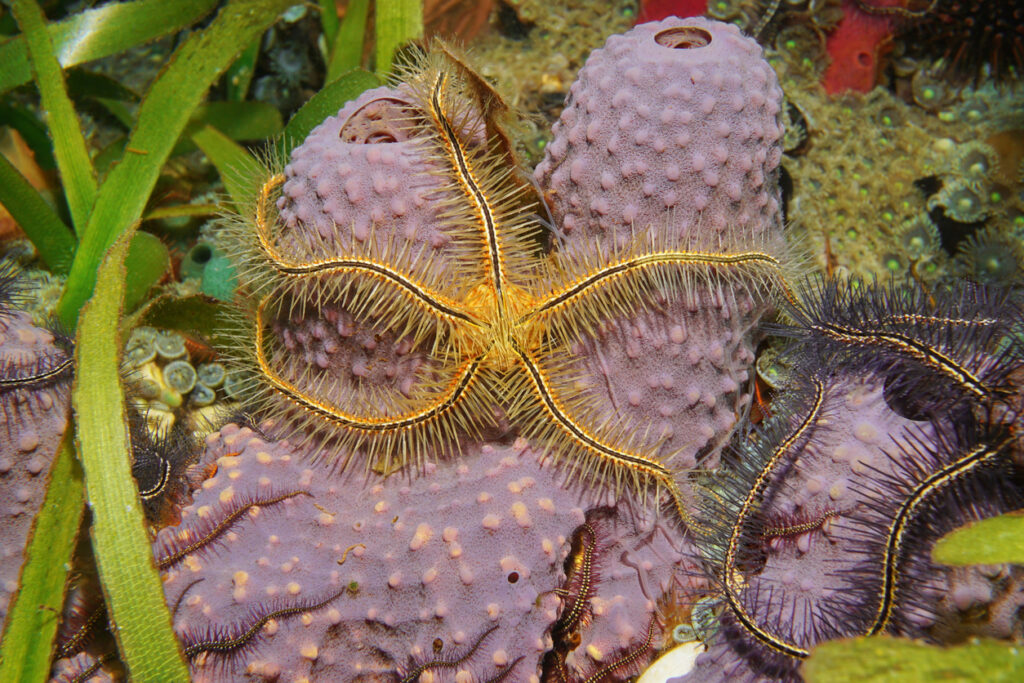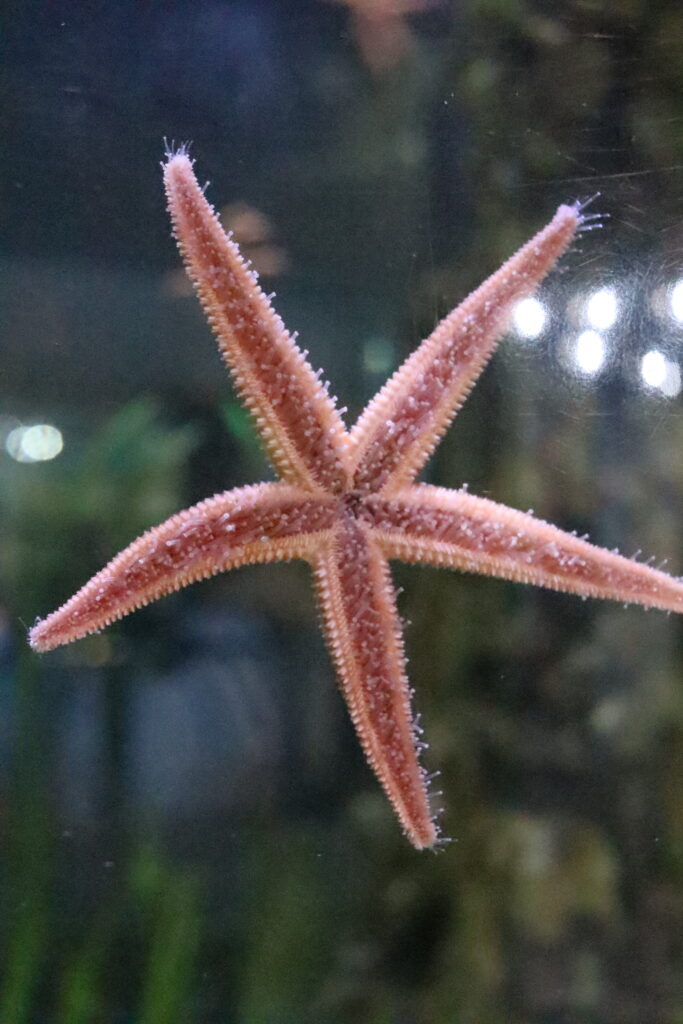You’d be forgiven for thinking that all star-shaped sea creatures are the same, but in fact they can be very different from each other. In particular, starfish and brittle stars may look very similar, but they are both very fascinating animals in their own right.
These beautiful and strange looking animals might be part of the same family, but starfish and brittle stars can contrast in a number of ways. So, let’s find about more about starfish and brittle stars and what makes them so interesting…
What do starfish and brittle stars have in common?
Both starfish and brittle stars are marine invertebrates, and both classified under the Echinodermata category. This family also includes the likes of sea cucumbers and sea urchins. Echinoderms are only found in the ocean, and are known for their 5-point radial symmetry. This refers to the 5 arms that both starfish and brittle stars have – although in many cases, starfish can have more than 5 arms and some species are known to have up to 40!
Starfish and brittle stars have spiny, tough surfaces, which is where their family name comes from. In Greek, echinos means spiny and derma means skin.
Possibly the most fascinating and unusual ability across both starfish and brittle stars is that they can regrow lost body parts! This means they can regrow their arms if they are broken or eaten. Some species of starfish are even known to grow an entirely new starfish from just a part of a severed arm! This is one of the most important adaptations both species possess in order to survive in its marine environment.

What makes starfish and brittle stars different from each other?
Both starfish and brittle stars may be part of the same family, but they are very distinct species. Starfish (Asteroidea) aren’t actually fish at all, and many marine scientists are trying to change the name to sea stars. Brittle stars (Ophiuroidea) are closely related, but there are some distinct differences, particularly when it comes to appearance and bodily functions.
Appearance
Starfish are characterised by their thick, triangular shaped arms which are at their widest where they connect to the central body. Most species grow to around 12-24 centimetres, but some can reach much bigger sizes. Brittle stars, on the other hand, have much thinner arms that connect to a distinct central disc. While this disc is usually quite small, their arms can grow up to 60 centimetres long!
A starfish’s vital organs are located in its arms, but in a brittle star, you’ll find its organs in the central disc.
Movement
Both starfish and brittle stars have a water vascular system, which is a hydraulic system used for various functions. However, starfish rely on this system to move, thanks to small tube feet that are filled with water to become stiff, which results in a conveyor belt type rotation in order for the starfish to move. The water vascular system also helps starfish with sensory detection, capturing food and breathing.
Brittle stars don’t rely on their water vascular system for movement. Instead, they twist and coil their long arms – this means they can also move much quicker than a starfish. As their arms bend and twist, they reshape the sediment on the seafloor, which means they often play a role as seafloor engineers.

Diet
Starfish are mostly carnivorous and will eat mainly molluscs, including clams, mussels and oysters, but they are also known to eat snails and worms. Starfish are able to pry open molluscs with their suction-cupped feet. Interestingly, starfish eat their prey by extruding their stomach through their mouths! They capture the food and digest it, before drawing the stomach back into the body.
On the other hand, brittle stars are omnivores – some are detritivores, which means they eat dead organic matter on the seafloor. They eat mostly detritus, as well as algae and some small fish. Different species of brittle star feed in different ways – some are known as suspension feeders, which means they will find and eat food particles that are suspended in the water.
Come and see our starfish for yourself at Deep Sea World
With over 2,000 species of starfish and the same for brittle stars, the world’s oceans are teeming with these aquatic animals. You can see our very own starfish at Deep Sea World in our Tropics exhibit, home to the chocolate chip starfish!
Both star-shaped but both very distinct marine animals, starfish and brittle stars have some fascinating attributes. Fancy learning a little bit more about the ocean’s most interesting inhabitants? Check out our opening times and plan your next visit today!
